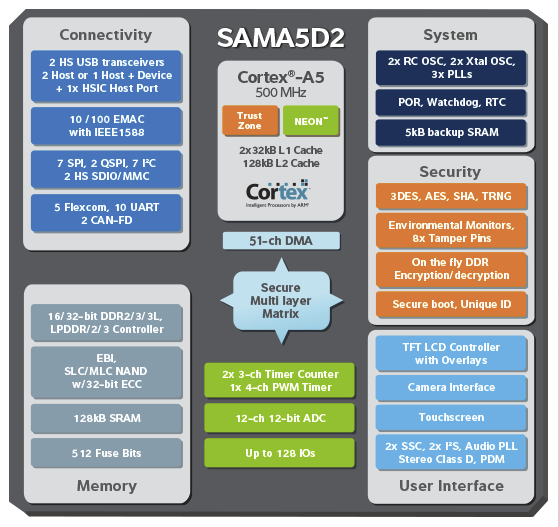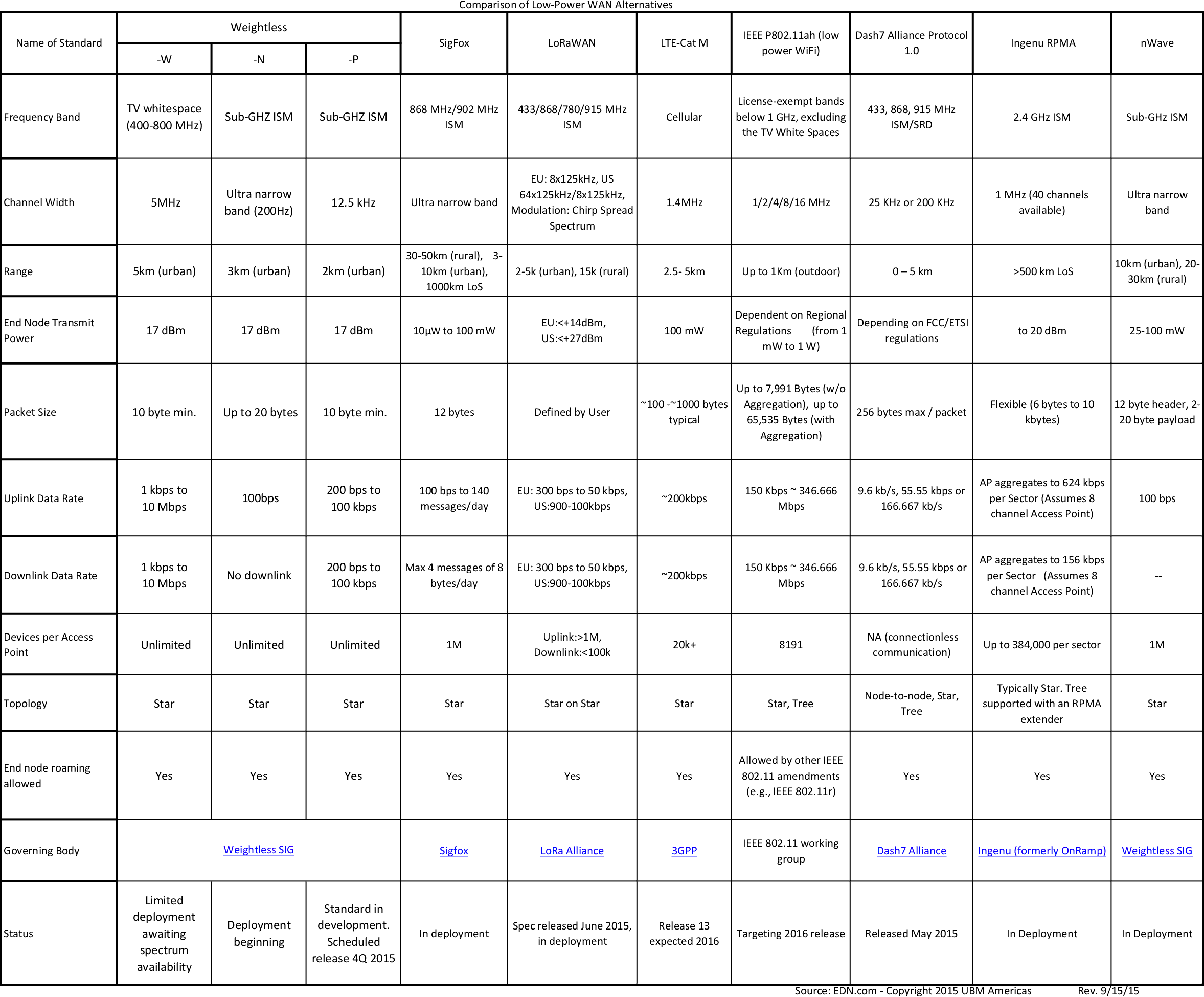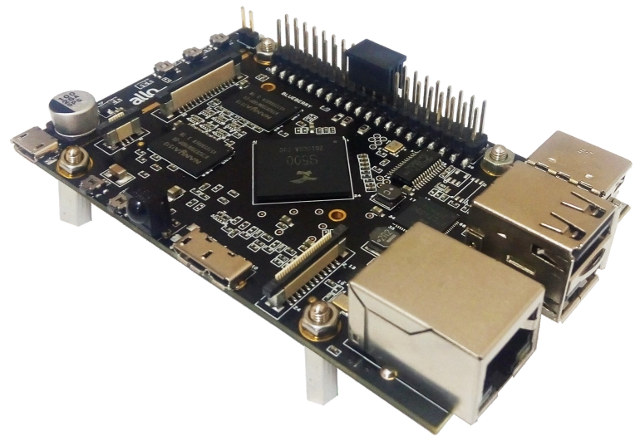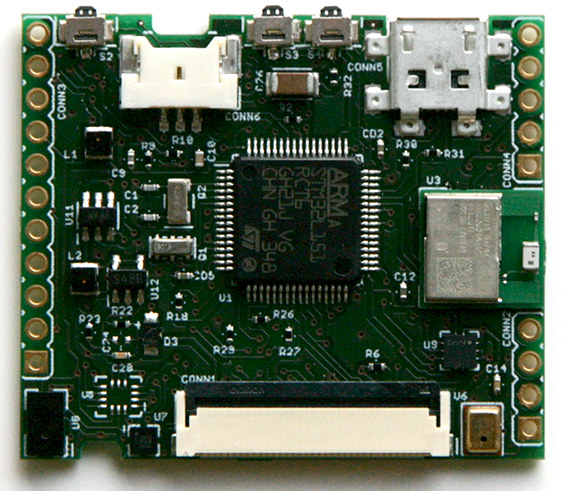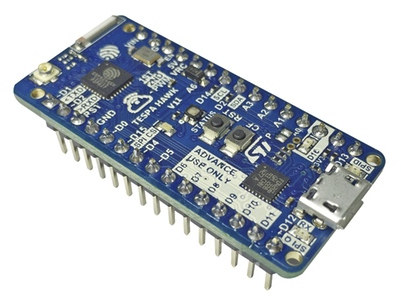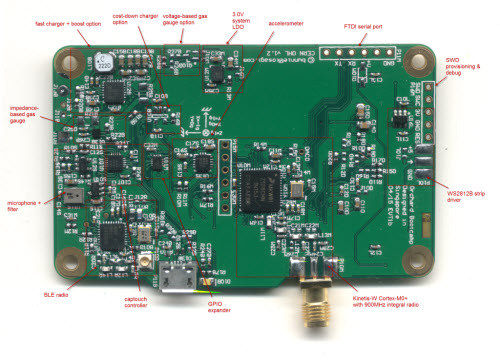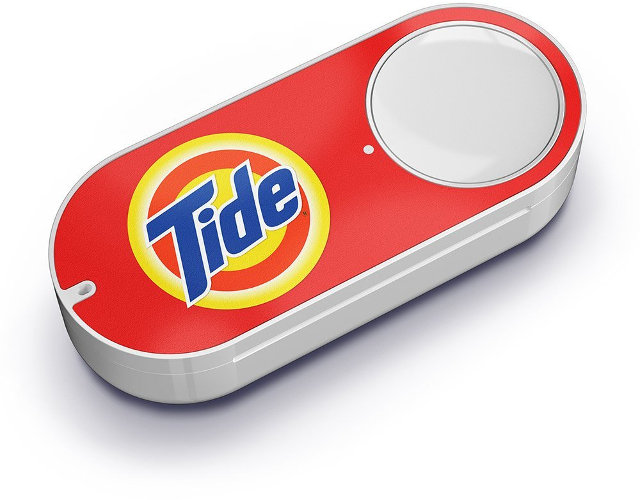Today, the news broke out that Atmel will be bought by Dialog Semiconductor for about $4.6 billion. The Anglo-German company is little known as their main products are PMIC, audio and connectivity chips, but they’ve still managed to get the financing to purchase Atmel. But that’s not the purpose of the post today, and instead I’ll cover a new SAMA5 Cortex A5 SoC recently announced by the company, targeting industrial Internet of Things, wearables and point of sale applications. SAMA5D2 key features and benefits: ARM Cortex-A5 core running at 500MHz (785DMIPS). Floating point unit (FPU) for high-precision computing and accelerated data processing. 128KB of L2 cache for system performance Low power consumption Less than 150mW in active mode at 500MHz with all peripherals activated Less than 0.5mW in low power mode with SRAM and registers retention Sub 200µA in retention mode with context preserved New backup mode with DDR in […]
Comparison Table of Low Power WAN Standards for Industrial Applications
WiFi, Bluetooth and Zigbee are commonly found in consumer devices part of the “IoT ecosystem”, but the range, cost, power consumption, and/or scalability of these wireless standards are not suitable. For example, agricultural and forestry applications normally require long distance, and smart parking or city lighting may requires scalability to a great number of nodes, so alternatives are needed. EDN wrote a thorough article comparing 10 alternative wireless standards: Weightless-W, Weightless-N, Weightless-P, SigFox, LoRaWAN, LTE-Cat M, IEEE P802.11ah, Dash7, Ingenu RPMA, and nWave. The table includes the frequency band, channel width, range, transmit power, packet size (minimal or maximal), downlink and uplink data rates, maximum number of connected devices, topology, roaming capability, and status. If you had to implement something today, four to five solutions are “in deployment”: SigFox, Ingenu RPMA, nWave, LoRa, and possibly Dash7, while the other are only starting to get deployed, or will be finalized in […]
Allo SPARKY Board Supports Raspberry Pi HATs for Multimedia, IoT and VoIP Applications
Allo is a company based in Bangalore, India specializing in VoIP hardware solutions, but they’ve recently developed a single board board powered by Actions Semi S500 quad core processor that supports various Raspberry Pi HATs and can be used for multimedia, IoT, and Telecom application such as Asterix or Freeswitch PBX. Allo SPARKY board specifications: SoC – Actions Semi S500 quad core Cortex A9r4 processor with PowerVR SGX544 GPU @ 500 MHz Memory – 1 or 2GB RAM Storage – Socket for 8, 16, 32 or 64GB pluggable eMMC modules, micro SD slot up to 32GB, optional NAND flash Video Output – HDMI, 34-pin LCD connector Audio – HDMI, Headphone jack, built-in microphone Video Codec – H.265 (HEVC) and Ultra HD (4K*2K) video playback. Encoding up to 1080p@60fps. Connectivity – 10/100M Ethernet USB – 2x USB 2.0 host ports, 1x USB 3.0 (OTG) port Camera – 24-pin camera interface (Up […]
LimiFrog is a Bluetooth 4.1 Wearables Devkit Based on STM32L4 with Lots of Sensors (Crowdfunding)
LimitFrog is a tiny board powered by STMicro STM32-L4 microcontroller with Bluetooth 4.1 connectivity, plenty of sensors, and that can run code bare metal as well as RiOT real-time operating system. LimiFrog specifications: MCU – STMicro STM32-L4 ARM Cortex M4 micro-controller @ 80 MHz with DSP, 512KB flash, 128KB RAM External storage – 8MB serial flash for data that supports FAT32 file system Display – 160×128 RGB565 OLED display Connectivity – Bluetooth 4.1 (Panasonic PAN1740) Sensors (Follow this link for datasheets of most components) Pressure, altitude & temperature (LPS25H) 3-axis accelerometer, 3-axis gyroscope (LSM6DS3) 3-axis magnetometer (LIS3MDL) Ambient light, proximity and distance (VL6180X) Ambient sound (SPU0414H5H) USB – micro USB port for power and programming Expansions – 11-pin (through holes) providing access to SPI, I2C, CAN, PWM, GPIOs, ADC, DAC, Analog out, and power signals (3V out GND) Battery – 500 mAh (hours to weeks of battery life depending on […]
TESPA Hawk IoT Board Combines ESP8266 with STM32 MCU in an Arduino Nano Form Factor (Crowdfunding)
TESPA Hawk is an IoT board designed by three companies based in Thailand and Singapore: Deaware delivers the embedded software for the board, Gravitech handles hardware design and manufacturing, and MakerAsia provides the IoT cloud platform. At first glance, it looks like yet another board based on the popular ESP8266 WiSoC, but it also includes an STM32 micro-controller, and its pinout is the same as Arduino Nano. There are also various add-on boards (WINGs) to easily and quickly prototype IoT projects. TESPA Hawk specifications: WiSoC – Espressif ESP8266 @ 80MHz with 8MB Flash MCU – ST Micro STM32F042G6 ARM Cortex-M0 MCU @ 48MHz with 32KByte Flash, 6KB SRAM Connectivity – WiFI 802.11 b/g/n/ with on-board antenna and u.FL socket for external antenna USB – micro USB port for power and programming Expansion – 2x 16-pin headers (mostly) compatible Arduino Nano pinout including 5-channel full range 3.3V ADC (4x 12-bit, 1x 10-bit), […]
Orchard is an Open Source Hardware Multi-Radio IoT Board Used to Learn Coding, Hardware Design and Manufacturing
Sutajio Ko-Usagi’s wiki is the place where you find documentation for open source hardware projects such as Novena laptop or Fernvale IoT board. There’s another IoT board supporting 900 MHz and Bluetooth radios called Orchard. Orchard board specifications: MCU – Kinetis MKW01 ARM Cortex-M0+ MCU @ 48 MHz with 128KB flash, 16KB RAM Connectivity 900 MHz radio with +13dBm transmit power (for long-range applications) Bluetooth LE radio (for short-range, low power connection to IP gateways) Display – 128×64 OLED Sensors – 3-axis Accelerometer, microphone sensor Debugging – FTDI serial port header, SWD provisioning & debug header Misc Captouch button controller WS2812B LED strip driver Lithium ion battery solution Gas gauge for accurate battery life determination Charging solution that can support high-capacity batteries Integral 5V boost The hardware files and ChibiOS 3.0 firmware source code are all available. The board does not appear to be for sale, but instead students taking […]
$5 Amazon Dash Buttons Can Be Hacked as WiFi Logging Buttons
Amazon launched Dash buttons earlier this year in order to allow Amazon Prime customers to order products by simply pressing them. The small WiFi enabled buttons only cost $5, and looked like a nice thing to hack. And that’s exactly what Ted Benson did, and managed to use them to log his baby’s patterns like the number of time he poos, or wakes up at night by pressing some buttons, and storing the results in a spreadsheet. The hack does not involve any firmware or hardware modifications, and instead he noticed that the Dash was disconnected and sleeping, except when the button was pressed. So all he does is to detect ARP requests from the Dash using some Python code relying on Scapy library, and when the MAC address matches one of the dash MAC addresses (hard coded in the Python program), data is sent to a Google Spreadsheet using […]
Weightless-P Standard is Designed for High Performance, Low Power, 2-Way Communication for IoT
Weightless was unveiled over two years ago, as a new standards for IoT leveraging “white space” spectrum, previously used by analog TV broadcasts, for free M2M / IoT communication using low power (10 years battery life) and cost-efficient hardware ($2 hardware) offering a range of 5 to 10 km. Development kits and base stations were scheduled for Q2 2014, but there’s either been some delays or they are only available to Weightless members, as you need to register to get notified once hardware becomes available. The Weightless SIG (Special Interest Group) has not stopped working on the standard as there are now three Weightless standards: Weightless-W (using White band spectrum), Weightless-N (sub-GHz spectrum), and and newly announced Weightless-P offering similar features as 3GPP carrier grade solutions, but at lower costs and lower power consumption. The key features of Weightless-P are shown below: Excellent capacity and scalability for IoT deployment FDMA+TDMA […]


